#the george telegraph training institute
Explore tagged Tumblr posts
Text

Get The Best Courses from George Telegraph Training Institute
George Telegraph offers Electronics and Telecommunication Engineering courses, mobile smart phone repairing & CCTV training in Kolkata. Besides, it offers other job oriented courses also.
#george telegraph#george telegraph training institute#the george telegraph training institute#george telegraph course list#george telegraph course#george telegraph course fees#george telegraph course details#gtti course list#george telegraph courses name list#george telegraph courses
0 notes
Photo

Best Diploma in Medical Lab Technician Makaut - George Telegraph
Are you looking for the best dmlt course in Kolkata for your lab technician course? Visit at George Telegraph today and get your dmlt course fees details.
https://www.georgetelegraph.com/diploma-in-medical-lab-technician-makaut.aspx
#dmlt course#dmlt course in kolkata#lab technician course#lab technician course in kolkata#lab technician course fees#george telegraph dmlt course fees#lab technician course fees in kolkata#dmlt course fees in kolkata#lab technician training centre#george telegraph#george telegraph centre of paramedical science - behala#the george telegraph training institute course fees#the george telegraph training institute#george telegraph sealdah course fees
0 notes
Text

Best Professional Business Accountant Course in Kolkata
If you are looking for the best business accounting course in Kolkata then visit GTIA. GTIA provides the best Professional Business Accountant course program which is designed to give you the qualifications you need to succeed. Join now.
#accounting certificate programs near me#professional business accountant course in kolkata#online accounting certificate courses#george telegraph institute of accounts#accountant course#business accounting course#professional accountant course#accounting course#professional business accountant#accounting professional courses#accountant training courses
0 notes
Text
Top 10 graphic design institutes in Kolkata
Graphic design is an essential part of any business or creative endeavor. Kolkata is a hub for art and creativity, and there are many institutes that offer courses in graphic design. 99graphics design institute is one of the leading institutes in Kolkata that offers courses in graphic design. In this article, we will take a look at the top 10 graphic design institutes in Kolkata.
1. 99graphics design institute:
99graphics design institute is a premier institute that offers a range of courses in design, including graphic design. The institute has a team of experienced professionals who teach the latest techniques and software in graphic design. They offer a comprehensive curriculum that covers all aspects of graphic design, including typography, layout, color theory, branding, and more.
2. Arena Animation:
Arena Animation is a well-known name in the education industry, and they offer courses in various fields, including graphic design. The institute has a team of experienced trainers who provide practical training to the students, and they also offer placement assistance.
3. WLCI College:
WLCI College is a renowned name in the education industry, and they offer courses in various fields, including graphic design. The institute has a team of experienced trainers who provide hands-on training to the students, and they also offer placement assistance.
4. St. Xavier’s College:
St. Xavier’s College is one of the most prestigious colleges in Kolkata, and they offer a Bachelor’s degree in Multimedia and Animation. The course covers various aspects of graphic design, including typography, illustration, and more.
5. MAAC:
MAAC is a popular institute that offers courses in animation, VFX, and graphic design. The institute has a team of experienced trainers who provide practical training to the students, and they also offer placement assistance.
6. George Telegraph Training Institute:
George Telegraph Training Institute is a leading institute that offers courses in graphic design, web design, and more. The institute has a team of experienced trainers who provide hands-on training to the students, and they also offer placement assistance.
7. NSHM Knowledge Campus:
NSHM Knowledge Campus is a well-known name in the education industry, and they offer courses in various fields, including graphic design. The institute has a team of experienced trainers who provide practical training to the students, and they also offer placement assistance.
8. W3 Web School:
W3 Web School is a leading institute that offers courses in web design and development, digital marketing, and graphic design. The institute has a team of experienced trainers who provide hands-on training to the students, and they also offer placement assistance.
9. Image Creative Education:
Image Creative Education is a popular institute that offers courses in graphic design, animation, and more. The institute has a team of experienced trainers who provide practical training to the students, and they also offer placement assistance.
10. Indian Institute of Digital Art and Animation:
Indian Institute of Digital Art and Animation is a leading institute that offers courses in graphic design, animation, and VFX. The institute has a team of experienced trainers who provide hands-on training to the students, and they also offer placement assistance.
Conclusion:
Kolkata has a vibrant art and design culture, and there are many institutes that offer courses in graphic design. The top 10 institutes mentioned above are some of the best in the city and offer comprehensive courses in graphic design. Each of these institutes has a team of experienced trainers who provide practical training to the students, and they also offer placement assistance. If you are looking to start a career in graphic design, these institutes are a great place to start.To learn more visit us - https://99eedu.com/graphic-design-institutes/
#course#digital marketing jobs#digitalmarketingacademy#digitalmarketingcourse#digital marketing course in kolkata#digitalmarketing#graphic design training#graphicdesigner#graphic design#graphics design services#web graphics#graphicsdesign#graphicsdesigner#logo#art#branding#graphic#designer#logodesigner#logodesign#photoshop#graphicsdesigners#creative#logos#illustration#logodesigns#webdesign#graphicsdesigning#marketing#graphicdesigners
2 notes
·
View notes
Text
What is the best college\institute for a diploma in interior design in Kolkata?
If you're looking for a top-notch institute for a diploma in interior design in Kolkata, I'd highly recommend checking out the George Institute of Interior Design (GIID). They offer a fantastic Diploma in Professional Interior Design program that spans a year. What sets them apart is their rich legacy—backed by The George Telegraph Training Institute, a trusted name with a 98-year track record. GIID's diploma course covers the fundamentals of design, civil construction knowledge, and the principles of interior design.
FOR MORE INFORMATION CLICK;
What's cool is that they're not just about theory; they focus on practical experience too. With industry experts guiding you, you get hands-on exposure and even site visits. Plus, they're no stranger to recognition. As a training partner of the National Skill Development Corporation and various Sector Skill Councils, GIID ensures that you not only gain knowledge but also get the necessary skills for the industry. So, if you're passionate about becoming an interior designer and want a course designed by professionals with over 30 years of experience, GIID could be the perfect fit for you. Check out their Diploma in Professional Interior Design—it might just be the stepping stone you need for a flourishing career in interior design!
Hope this helps! If you have any more questions, feel free to ask
0 notes
Text
Diploma Course In Computer - The George Telegraph Training Institute
The great thing about diploma courses is that students can take them after 10th standard alone. They do not have to wait till any further to finish this course. Computer application, hardware and networking are the most commonly enrolled fields in this subject. It remains to be one of the most sought after courses which students are fond of for the enhancement of their career.
Learn More: https://www.georgetelegraph.com/diploma-course-in-computer-after-10th.aspx

#computerhardwarecourse#hardwareandnetworking#hardwareandnetworkingcourse#diplomacourseincomputer#computerhardwareandnetworking#computernetwork
1 note
·
View note
Link
0 notes
Text

George Institute of Image Management (GIIM) is a George Telegraph Group Initiative. We are a leading Image & Personality Management Training Institute in Kolkata, Personality Development Course In Kolkata. George Institute of Image Management (GIIM) offers certified Image Development and Image Transformation courses catering to the holistic Image Development needs of all sections of society.
1 note
·
View note
Text
Star Trek: Facets of Filmmaking
As it turns out, before Star Trek was fully realized in the form we know today, the show was originally not going to be about Kirk and the Enterprise at all. In fact, it was going to be about a ship called the S.S. Yorktown, captained by a man named Robert April, on a mission to explore the Milky Way galaxy. The original concept, still named Star Trek and set in the 23rd century, was loosely based on the Horatio Hornblower novels, and took inspiration from The Voyage of the Space Beagle, the Marathon series and the 1956 film Forbidden Planet.
By the year 1964, when this idea began to take shape, Gene Roddenberry, creator of Star Trek was an experienced writer for western television shows, and was well accustomed to (at the time) television’s favorite and most popular genre. By 1964, however, Roddenberry was tired of the shootouts, and wanted to do something different, something with a little more depth to it.
Still, Roddenberry knew what the executives, and the public, was used to. As a result, the first draft of this new Star Trek idea was generalized as a sort of ‘Wagon Train to the Stars’, a formulaic type of show where every episode was a standalone adventure in the continuous exploration of the final frontier: space.
As Roddenberry wrote the draft, a few things changed. Gone was Robert April, replaced by Captain Christopher Pike, who would be portrayed by Jefferey Hunter, and the rest of the crew. The name of the ship changed too, to the more familiar Enterprise. As these changes came about, so too did the true nature of Roddenberry’s dream show: both an adventure story, and a thought-provoking morality tale.
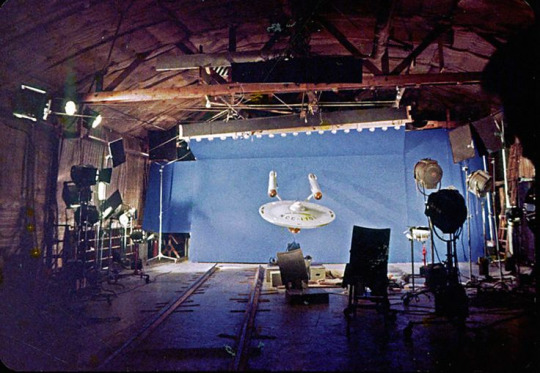
Armed with his script, Roddenberry brought Star Trek to Desilu Productions, (a rather large television production company headed and half-formed by Lucille Ball herself) and met with director of production Herbert F. Solow. Solow saw promise in the concept, and signed a three-year development contract with Roddenberry.
Star Trek moved into the next stage of development. Further drafts were drawn up and the idea that would later become the episode The Cage was revised, until it was shown to CBS as part of the ‘First Look’ deal with Desilu productions. CBS wasn’t impressed with the show, declining to purchase it. They had another ‘space show’ in development that seemed too similar, a show that would become Lost in Space.
However, another company became interested: NBC. In May of 1964, Grant Tinker, the head of the West Coast programming department, commissioned the pilot that would become The Cage (which would later be reworked into the episode The Menagerie). After it was completed, NBC turned it down, claiming that it was ‘too cerebral’, but although this was a mild defeat, Star Trek wasn’t beaten. NBC still showed interest in the concept, and made the highly unusual decision to commission a second pilot: the episode that would become Where No Man Has Gone Before.
With this came quite a few changes.
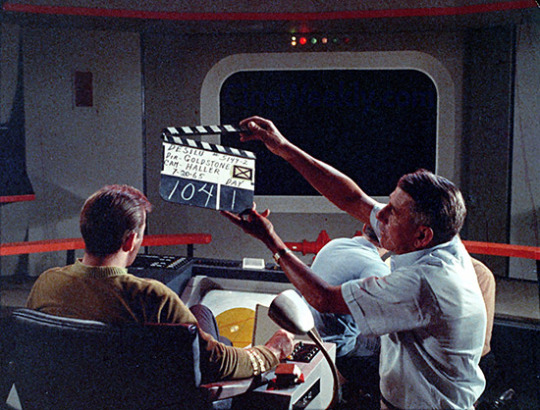
Christopher Pike was scrapped as a character, as was the vast majority of other cast members. Only the character of Spock, as portrayed by Leonard Nimoy, was kept, and of the other cast members, only Majel Barrett stayed, demoted from playing the second-in-command (scrapped due to the unthinkable notion of a woman Commander) to the ship’s nurse, Christine Chapel. With this new pilot came an onslaught of new, more familiar names and faces: William Shatner as Captain Kirk, Chief Engineer Lieutenant Commander Scott played by James Doohan, and Lieutenant Sulu, (originally a physicist in the first episode, but a helmsman afterwards) played by George Takei.
This pilot passed with flying colors, and with that, NBC added Star Trek to their fall lineup for 1966.
Still, there were changes to be made. In this first pilot, the ship’s doctor was Mark Piper, played by Paul Fix. Dr. Leonard McCoy, played by DeForest Kelley, would join the cast when principal filming for the first season began. Also joining the cast was Nichelle Nichols, playing Lieutenant Uhura, and Grace Lee Whitney as Yeoman Rand. (Whitney would depart halfway through the first season, after being on the receiving end of sexual assault from one of the executives of the show, but would later appear in the film series beginning in the 1970s.)
Besides Where No Man Has Gone Before, NBC ordered 15 episodes to start off the show. The first episode of Star Trek, The Man Trap, aired at 8:30 PM on Thursday, September 8th of 1966 as part of NBC’s ‘sneak preview’ time slot, received with mixed feelings. While some papers and reviewers genuinely liked the new show, (such as The Philadelphia Inquirer and the San Francisco Chronicle) others, such as The Boston Globe and The New York Times didn’t. Variety described the show as ‘an incredible and dreary mess of confusion and complexities’, and predicted that it would fail.
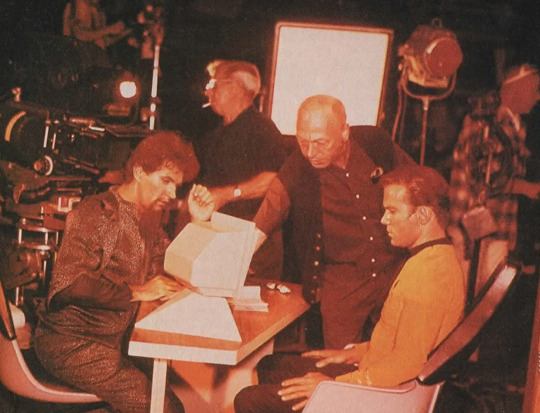
Fighting for position against reruns of previous shows, despite the critics’ warnings, Star Trek won a time slot, and began with decent ratings. However, it didn’t last long. By the end of the first season, Star Trek was sitting at 52nd out of 94 programs.
Star Trek was sinking, fast.
But even then, it wasn’t without its supporters.
The editor of Galaxy Science Fiction, Frederik Pohl, offered up his amazement that Star Trek’s consistency remained good, with no drop in quality after its Tricon winning early episodes. He expressed his fear that the show would be cancelled due to its low ratings, and pleaded with audiences to help save Star Trek, writing letters to prevent its cancellation.
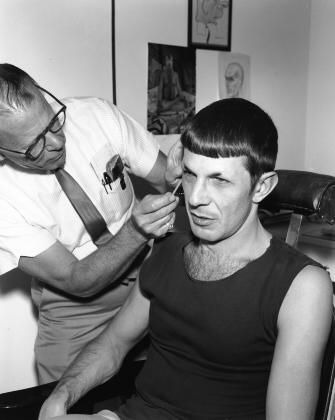
At this time, the only thing that was keeping the show on the air in the first place was the demographics it was reaching. NBC had become interested in the demographics of the shows it was producing in the early 1960s, and by 1967, was using that as part of the decision making as to which shows got dropped.
And something about Star Trek’s demographics interested NBC very much: it had managed to attract ‘quality’ audiences: high income, high educated people (primarily males).
As a result, NBC ordered ten more episodes for the first season, and ordered a second in March of 1967. The network then changed Star Trek’s timeslot, moving it to 8:30 on Friday nights, a timeslot that seemed doomed for failure among the audience that Star Trek had gathered.
The next season, things didn’t seem to be getting any better. It was at this point that the show added on Walter Koenig as Ensign Chekov (as George Takei was working on The Green Berets and was not as available for shooting), although some might have wondered why they would have bothered. The show’s ratings were still dropping. William Shatner, expecting the show to be cancelled, began to prepare for other projects.

Again, the demographics saved the day.
Roddenberry’s initial concept of adventure alongside morality tales intrigued the audiences Star Trek had attracted. The show had values, values that had to be applied to every situation. The show was sincere, and serious in its exploration of issues like racism, war and peace, human rights, technology, class warfare, and imperialism, far different in tone and content than the other chief sci-fi show at the time: Lost in Space. As a result, the show generated a more interested fanbase, perhaps the first true ‘fanbase’ of any franchise in history. In the end, it was they who saved Star Trek.
By the end of the first season, NBC had received well over 29,000 fan letters. During the second season, Roddenberry began a campaign to persuade fans to write in to NBC, to support the show and save the program. Between December of 1967 and March of 1968, NCB had received nearly 116,000 letters from people who did not want to see Star Trek cancelled. Science fiction conventions, magazines, and newspaper columnists encouraged readers to save what was called ‘the best science-fiction show on the air’.
The fans didn’t stop with letters. Over 200 students of the California Institute of Technology marched to NBC’s studio in Burbank to protest the cancellation of Star Trek in January of 1968, carrying signs that said things like ‘Vulcan Power’. They weren’t alone; other groups of students of MIT and Berkeley did the same thing in New York City and San Francisco.
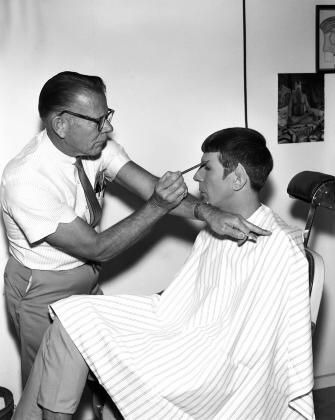
Interestingly, the letters that NBC received were not of the typical ‘fan mail’ quality.
“Much of the mail came from doctors, scientists, teachers, and other professional people, and was for the most part literate–and written on good stationery. And if there is anything a network wants almost as much as a high Nielsen ratings, it is the prestige of a show that appeals to the upper middle class and high-brow audiences.” (Lowry, Cynthia (January 17, 1968). “One Network Goes ‘Unconventional’”. Nashua Telegraph. Associated Press. p. 13)
“The show, according to the 6,000 letters it draws a week (more than any other in television), is watched by scientists, museum curators, psychiatrists, doctors, university professors, and other highbrows. The Smithsonian Institution asked for a print of the show for its archives, the only show so honored.” (Scott, Vernon (February 7, 1968). “Letters Can Save 'Star Trek’”. The Press-Courier. Oxnard, California. United Press International. p. 17.)
After the episode The Omega Glory, on March 1st, 1968, the announcement came:
“And now an announcement of interest to all viewers of Star Trek. We are pleased to tell you that Star Trek will continue to be seen on NBC Television. We know you will be looking forward to seeing the weekly adventure in space on Star Trek.” (“Letters For 'Star Trek’ Hit 114,667”. The Modesto Bee. April 14, 1968. p. 26.)
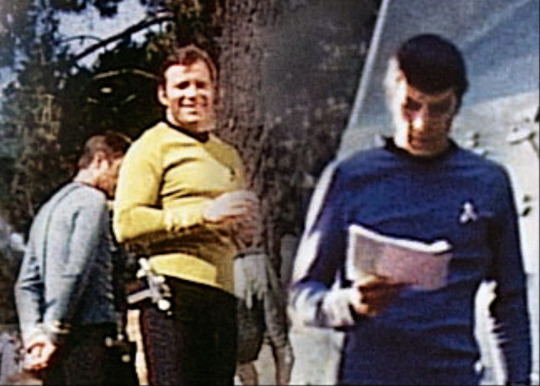
If this was intended to stop the letter writing campaign, it was a dismal failure. A comparable number of letters came in to NBC following this announcement, full of thanks for renewing the show for the third season.
In March of 1968, NBC moved Star Trek to another time slot: 10:00 PM on Fridays, an even worse shot than before. To make matters worse, it was only being seen by 181 out of 210 of NBC’s affiliates. Roddenberry fought the network to move it to a better time, but he was denied. Exhausted, Roddenberry quit working on production of Star Trek, remaining executive producer in name only. The running of the show went to Fred Freiberger, who was with the show as it stood on its last, shaky, legs.
And it was on its last legs.
Star Trek season three was a dying breath, the death-rattle of a show that was being intentionally destroyed by its own network.
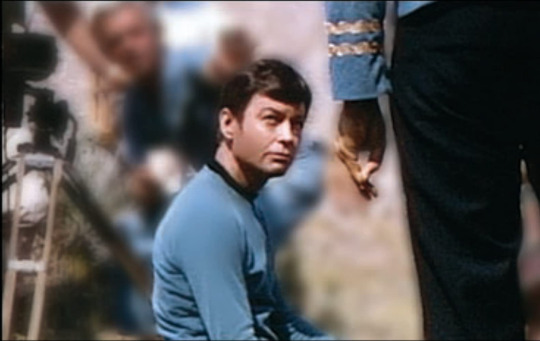
To quote Nichelle Nichols:
“While NBC paid lip service to expanding Star Trek’s audience, it [now] slashed our production budget until it was actually 10% lower than it had been in our first season … This is why in the third season you saw fewer outdoor location shots, for example. Top writers, top guest stars, top anything you needed was harder to come by. Thus, Star Trek’s demise became a self-fulfilling prophecy. And I can assure you, that is exactly as it was meant to be.”
It showed.
While I hesitate to call season three of Star Trek a mess, it is difficult to deny that the show was definitely struggling. Episodes dropped in quality, characters became more exaggerated and less ‘true’. Star Trek stopped filming in January of 1969, and after a total run of 79 episodes, the show was cancelled.
As a newspaper columnist advised:
“You Star Trek fans have fought the “good fight,” but the show has been cancelled and there’s nothing to be done now.”
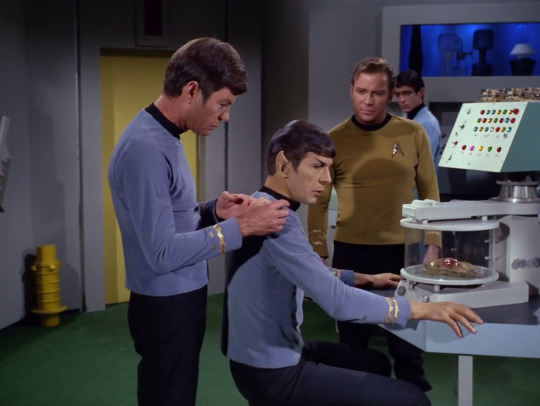
Rather incongruous with the image of the pop-culture giant we know it as today, wouldn’t you think?
So what happened?
As it turns out, Star Trek had enough episodes (thanks to the third season) to enter syndication. Desilu Productions, which at that point had become Paramount, licensed the syndication rights in order to turn a profit, and reruns of Star Trek began airing in late 1969.
In syndication, Star Trek became a cult classic, finding a larger audience on reruns than it had during its original run. The show, which was airing in the afternoons and early evenings, was attracting a young demographic, and, ironically, Star Trek became known as ‘the show that wouldn’t die’. By 1970, Star Trek was boosting Paramount’s ratings, and becoming extremely popular. In January of 1972, over 3,000 fans attended the first Star Trek convention in New York City, kicking off a previously unheard-of trend of organized fan gatherings where they could buy merchandise, meet cast and crew, and screen episodes of the show. These people, coming to be known as ‘trekkies’, took pride in their knowledge and extreme love for this series, which was becoming renowned for being a smart, heartfelt science fiction show that had been cancelled too early.
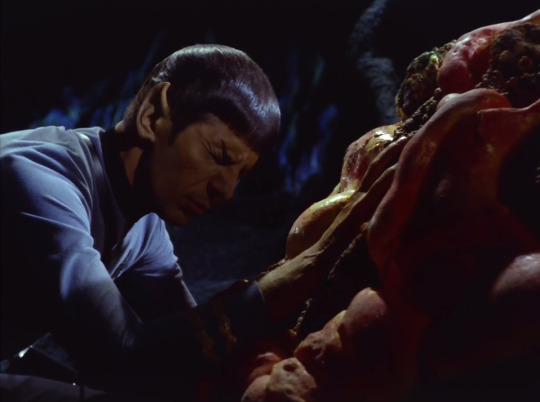
17 years after Star Trek was cancelled and started reruns, Star Trek became the most popular syndicated show of all time. By 1987, Paramount was bringing in $1 million per episode, and by 1994, reruns were still airing in over 90% of the United States of America.
The rest is history.
It has been over fifty years since Gene Roddenberry’s vision of a wagon train to the stars first took flight, and it was a hard battle fought to get as far as it did. Never before had a show garnered the support and devoted love from a fanbase, never had it inspired such huge leaps and bounds in television and fandom alike. Never had a television show meant so much to so many, and continued to do so well past its end.
For a show that struggled through a third season, it seems incredible that Star Trek still holds the weight that it does today. The show that wouldn’t die gained new life beyond the grave, still capturing people’s attention decades after it was cancelled, growing to become one of the best known and best loved television shows ever made.
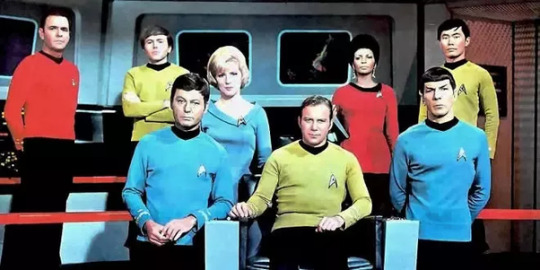
Against all odds, Star Trek lives on, remaining one of the greatest television shows of all time, for very good reason.
Join me for one last article as next time we take one last look at Star Trek in our Final Thoughts. If you have any thoughts, questions, suggestions, recommendations, or just want to say hi, don’t forget to leave an ask! Thank you all so much for reading, and I hope to see you in the next article.
#Star Trek: The Original Series#Star Trek#Television#TV#TV-PG#60s#Drama#Action#Adventure#Science Fiction#Sci-Fi#William Shatner#Leonard Nimoy#DeForest Kelley#James Doohan#Nichelle Nichols#George Takei#Walter Koenig#Majel Barrett#Gene Roddenberry
55 notes
·
View notes
Photo

Nellie Bly, was a real Phileas Fogg, and the first undercover investigative journalist .... Read more below
Born 156 years ago, today 5th May 1864, Elizabeth Cochran Seaman, better known by her pen name Nellie Bly, was an American journalist, industrialist, inventor, and charity worker who was widely known for her record-breaking trip around the world in 72 days, in emulation of Jules Verne's fictional character Phileas Fogg, and an exposé in which she worked undercover to report on a mental institution from within. She was a pioneer in her field, and launched a new kind of investigative journalism
In 1880, Cochrane's mother moved her family to Pittsburgh. A newspaper column entitled "What Girls Are Good For" in the Pittsburgh Dispatch that reported that girls were principally for birthing children and keeping house prompted Elizabeth to write a response under the pseudonym "Lonely Orphan Girl". The editor, George Madden, was impressed with her passion and ran an advertisement asking the author to identify herself. When Cochrane introduced herself to the editor, he offered her the opportunity to write a piece for the newspaper, again under the pseudonym "Lonely Orphan Girl"] Her first article for the Dispatch, entitled "The Girl Puzzle", was about how divorce affected women. In it, she argued for reform of divorce laws. Madden was impressed again and offered her a full-time job. It was customary for women who were newspaper writers at that time to use pen names. The editor chose "Nellie Bly", after the African-American title character in the popular song "Nelly Bly" by Stephen Foster.
Bly left the Pittsburgh Dispatch in 1887 for New York City. Penniless after four months, she talked her way into the offices of Joseph Pulitzer's newspaper the New York World, and took an undercover assignment for which she agreed to feign insanity to investigate reports of brutality and neglect at the Women's Lunatic Asylum on Blackwell's Island.
It was not an easy task for Bly to be admitted to the Asylum: She first decided to check herself into a boarding house called Temporary Homes for Females. She stayed up all night to give herself the wide-eyed look of a disturbed woman, and began making accusations that the other boarders were insane. Bly told the assistant matron "There are so many crazy people about, and one can never tell what they will do." She refused to go to bed, and eventually scared so many of the other boarders that the police were called to take her to the nearby courthouse. Once examined by a police officer, a judge, and a doctor, Bly was taken to Blackwell's Island.
Committed to the asylum, Bly experienced the deplorable conditions firsthand. After ten days, the asylum released Bly at The World's behest. Her report, later published in book form as Ten Days in a Mad-House, caused a sensation, prompted the asylum to implement reforms, and brought her lasting fame.
Biographer Brooke Kroeger argues: Her two-part series in October 1887 was a sensation, effectively launching the decade of “stunt” or “detective” reporting, a clear precursor to investigative journalism and one of Joseph Pulitzer’s innovations that helped give “New Journalism” of the 1880s and 1890s its moniker.
In 1888 Bly suggested to her editor at the New York World that she take a trip around the world, attempting to turn the fictional Around the World in Eighty Days (1873) into fact for the first time. A year later, at 9:40 a.m. on November 14, 1889, and with two days' notice, she boarded the Augusta Victoria, a steamer of the Hamburg America Line, and began her 40,070 kilometer journey. She took with her the dress she was wearing, a sturdy overcoat, several changes of underwear, and a small travel bag carrying her toiletry essentials. She carried most of her money (£200 in English bank notes and gold, as well as some American currency) in a bag tied around her neck
During her travels around the world, Bly went through England, France (where she met Jules Verne in Amiens), Brindisi, the Suez Canal, Colombo (Ceylon), the Straits Settlements of Penang and Singapore, Hong Kong, and Japan. The development of efficient submarine cable networks and the electric telegraph allowed Bly to send short progress reports, although longer dispatches had to travel by regular post and thus were often delayed by several weeks.
Bly traveled using steamships and the existing railroad systems, which caused occasional setbacks, particularly on the Asian leg of her race. During these stops, she visited a leper colony in China and, in Singapore, she bought a monkey.
Just over seventy-two days after her departure from Hoboken, Bly was back in New York. She had circumnavigated the globe, traveling alone for almost the entire journey. Bly's journey was a world record, although it was bettered a few months later by George Francis Train, whose first circumnavigation in 1870 possibly had been the inspiration for Verne's novel. Train completed the journey in 67 days, and on his third trip in 1892 in 60 days.
In 1895, Bly married millionaire manufacturer Robert Seaman. Bly was 31 and Seaman was 73 when they married. Due to her husband's failing health, she left journalism and succeeded her husband as head of the Iron Clad Manufacturing Co., which made steel containers such as milk cans and boilers. In 1904, Seaman died.
According to biographer Brooke Kroeger: She ran her company as a model of social welfare, replete with health benefits and recreational facilities. But Bly was hopeless at understanding the financial aspects of her business and ultimately lost everything. Unscrupulous employees bilked the firm of hundreds of thousands of dollars, troubles compounded by a protracted and costly bankruptcy litigation.
Bly died of pneumonia at St. Mark's Hospital in New York City in 1922 at age 57
This is my colourised version of a photograph taken in 1890 when Nellie was 26
Restoring Your Past … Website
Restoring Your Past … on Facebook
#American journalist#industrialist#inventor#charity worker#record-breaking#around the world#Jules Verne#Phileas Fogg#undercover#mental institution#investigative journalism#vintage#history#colourised#colorized#photo-colourisation#photo-colorization
4 notes
·
View notes
Text

Get The Best Vocational Course in Kolkata 2023
Learn the best job oriented training courses like automobile engineering courses, paramedical courses, account and finance courses and many more. We also provide 100% job assistance placements.
#george telegraph training institute#george telegraph#the george telegraph training institute#george telegraph sealdah#george telegraph college#george telegraph institute#sealdah george telegraph#the george telegraph training institute sealdah#vocational trainings#vocational courses#vocational training courses#vocational college#vocational training in kolkata#vocational courses in kolkata#vocational training institute in kolkata#vocational training center#vocational courses after 10th#vocational courses after 12th#vocational training institute#vocational schools near me#vocational school near me
0 notes
Photo

Vocational training v/s University Education | George Telegraph
Difference between vocational education and work education is Vocational education are concerned with providing a student with the necessary skills to prepare him or her for a specific work role, whereas College education frequently includes classes in a wide range of topics that may or may not directly relate to a student's major and that a graduate may or may not use in their career.
https://www.georgetelegraph.com/difference-between-vocational-and-university-education.aspx
#vocational university#difference between vocational education and work education#vocational education vs academic education#education and vocational training#vocational training vs university education#difference between educational guidance and vocational guidance#difference between technical and vocational education#the george telegraph training institute
0 notes
Text

How Does A Certified GST Course Help In Understanding Indian Taxation?
Explore how a certified GST course enhances your knowledge of Indian taxation. Enroll in the goods and services tax course at George Telegraph Institute of Accounts for expert training in GST. Join the best GST course in Kolkata today!
#gst course in kolkata#goods and services tax course#certified gst course#certification course on gst#gst course#course on gst#gst accounting course#certificate course in gst#gst courses in kolkata#gst course online#gst training online
0 notes
Text
Events 3.3
473 – Gundobad (nephew of Ricimer) nominates Glycerius as emperor of the Western Roman Empire. 724 – Empress Genshō abdicates the throne in favor of her nephew Shōmu who becomes emperor of Japan. 1575 – Mughal Emperor Akbar defeats Sultan of Bengal Daud Khan Karrani's army at the Battle of Tukaroi. 1585 – The Olympic Theatre, designed by Andrea Palladio, is inaugurated in Vicenza. 1776 – American Revolutionary War: The first amphibious landing of the United States Marine Corps begins the Battle of Nassau. 1779 – American Revolutionary War: The Continental Army is routed at the Battle of Brier Creek near Savannah, Georgia. 1799 – The Russo-Ottoman siege of Corfu ends with the surrender of the French garrison. 1820 – The U.S. Congress passes the Missouri Compromise. 1845 – Florida is admitted as the 27th U.S. state. 1849 – The Territory of Minnesota is created. 1857 – Second Opium War: France and the United Kingdom declare war on China. 1859 – The two-day Great Slave Auction, the largest such auction in United States history, concludes. 1861 – Alexander II of Russia signs the Emancipation Manifesto, freeing serfs. 1865 – Opening of The Hongkong and Shanghai Banking Corporation, the founding member of the HSBC Group. 1873 – Censorship in the United States: The U.S. Congress enacts the Comstock Law, making it illegal to send any "obscene literature and articles of immoral use" through the mail. 1875 – Georges Bizet's opera Carmen receives its première at the Opéra-Comique in Paris. 1875 – The first ever organized indoor game of ice hockey is played in Montreal, Quebec, Canada as recorded in the Montreal Gazette. 1878 – The Russo-Turkish War ends with Bulgaria regaining its independence from the Ottoman Empire according to the Treaty of San Stefano. 1885 – The American Telephone & Telegraph Company is incorporated in New York. 1891 – Shoshone National Forest is established as the first national forest in the US and world. 1910 – Rockefeller Foundation: John D. Rockefeller Jr. announces his retirement from managing his businesses so that he can devote all his time to philanthropy. 1913 – Thousands of women march in a suffrage parade in Washington, D.C. 1918 – Russia signs the Treaty of Brest-Litovsk, agreeing to withdraw from World War I, and conceding German control of the Baltic States, Belarus and Ukraine. It also conceded Turkish control of Ardahan, Kars and Batumi. 1923 – TIME magazine is published for the first time. 1924 – The 407-year-old Islamic caliphate is abolished, when Caliph Abdülmecid II of the Ottoman Caliphate is deposed. The last remnant of the old regime gives way to the reformed Turkey of Kemal Atatürk. 1924 – The Free State of Fiume is annexed by the Kingdom of Italy. 1931 – The United States adopts The Star-Spangled Banner as its national anthem. 1938 – Oil is discovered in Saudi Arabia. 1939 – In Bombay, Mohandas Gandhi begins a hunger strike in protest at the autocratic rule in British India. 1940 – Five people are killed in an arson attack on the offices of the communist newspaper Flamman in Luleå, Sweden. 1942 – World War II: Ten Japanese warplanes raid Broome, Western Australia, killing more than 100 people. 1943 – World War II: In London, 173 people are killed in a crush while trying to enter an air-raid shelter at Bethnal Green tube station. 1944 – The Order of Nakhimov and Order of Ushakov are instituted in USSR as the highest naval awards. 1945 – World War II: American and Filipino troops recapture Manila. 1945 – World War II: The RAF accidentally bombs the Bezuidenhout area of The Hague, Netherlands, killing 511 people. 1951 – Jackie Brenston, with Ike Turner and his band, records "Rocket 88", often cited as "the first rock and roll record", at Sam Phillips's recording studios in Memphis, Tennessee. 1953 – A De Havilland Comet (Canadian Pacific Air Lines) crashes in Karachi, Pakistan, killing 11. 1958 – Nuri al-Said becomes Prime Minister of Iraq for the eighth time. 1969 – Apollo program: NASA launches Apollo 9 to test the lunar module. 1972 – Mohawk Airlines Flight 405 crashes as a result of a control malfunction and insufficient training in emergency procedures. 1974 – Turkish Airlines Flight 981 crashes at Ermenonville near Paris, France killing all 346 aboard. 1980 – The USS Nautilus is decommissioned and stricken from the Naval Vessel Register. 1985 – Arthur Scargill declares that the National Union of Mineworkers' national executive voted to end the longest-running industrial dispute in Great Britain without any peace deal over pit closures. 1985 – A magnitude 8.3 earthquake strikes the Valparaíso Region of Chile, killing 177 and leaving nearly a million people homeless. 1986 – The Australia Act 1986 commences, causing Australia to become fully independent from the United Kingdom. 1991 – An amateur video captures the beating of Rodney King by Los Angeles police officers. 2005 – James Roszko murders four Royal Canadian Mounted Police constables during a drug bust at his property in Rochfort Bridge, Alberta, then commits suicide. This is the deadliest peace-time incident for the RCMP since 1885 and the North-West Rebellion. 2005 – Steve Fossett becomes the first person to fly an airplane non-stop around the world solo without refueling. 2005 – Margaret Wilson is elected as Speaker of the New Zealand House of Representatives, beginning a period lasting until August 23, 2006 where all the highest political offices (including Elizabeth II as Head of State), were occupied by women, making New Zealand the first country for this to occur. 2013 – A bomb blast in Karachi, Pakistan, kills at least 45 people and injured 180 others in a predominately Shia Muslim area.
3 notes
·
View notes
Link
Hello, royal watchers and all those intrigued by what’s going on inside the House of Windsor. This is your biweekly dose of royal news and analysis.Reading this online?
Sign up here to get this delivered to your inbox.
Janet Davison
Royal Expert
Was it really another 'annus horribilis' for the Queen?
(Richard Pohle/Getty Images)
As 2019 draws to a close, there has been much chatter about whether the year has been another “annus horribilis” for Queen Elizabeth.
Along with the sordid, ongoing saga around Prince Andrew’s friendship with convicted sex offender Jeffrey Epstein, the House of Windsor was buffeted by talk of potential rifts between Princes William and Harry and their wives.
Controversy also followed Harry and his wife, Meghan, over everything from privacy and secrecy to suggestions of hypocrisy when it comes to how environmentally friendly they might be. The Queen also found herself much closer to politics than usual as Brexit continued to convulse the U.K.
But does all that really rival 1992, when the Queen famously told a gathering marking her 40 years on the throne that it was an "annus horribilis?"
Maybe not.
“This past year has been challenging for the Royal Family, but on balance, its events haven't threatened the monarchy in the same way,” biographer Sally Bedell Smith, author of Elizabeth the Queen: The Life of a Modern Monarch, said via email.
In 1992, there was a litany of troubles. Andrew Morton’s book Diana: Her True Story “was devastating for Prince Charles — and by extension, his fitness as a future king,” said Smith, and Charles's separation from Diana was an “inevitable consequence.”
The marriages of his brother Andrew and sister Anne also imploded. And in November, fire devastated Windsor Castle, for which Elizabeth has a particular fondness.
That’s not to say, however, that 2019 didn’t have its troubles.
“The only parallel between 1992 and 2019 is Prince Andrew as a source of serious concern,” said Smith, with his involvement in the Epstein scandal staining his reputation.
“The Queen, backed by Prince Charles and Prince William, did the right thing by removing him from his public duties. He is now a ‘minor royal,’ well down the line of succession, so his departure from public life won't have as much impact as it would have in 1992, when he was preceded only by Charles, and his two young sons.”
The problems Andrew faces ”are pretty horrendous,” Ingrid Seward, editor-in-chief of Majesty magazine, said via email.
“It is very sad for the Queen to see her favourite son being ridiculed and in such an unsavoury mess. But he is 60 in February and there is not much the Queen can do about it. He has to get himself out of the mess with as little damage to the [institution] of the monarchy as possible.”
And then there is the controversy that swirled throughout the year around Harry and Meghan.
“The bumps in their life as a royal couple — their antagonism toward the press, the resentment of their tendency to act more like celebrities than members of the Royal Family, the accusations of hypocrisy when they failed to practise what they were preaching — will presumably smooth out in 2020,” said Smith.
As much as there was controversy this year, there were also moments of hope and optimism.
Seward sees several “high notes” to 2019, including the arrival of Harry and Meghan’s first child, Archie; the wedding of the Queen’s “favourite great niece” Gabriella Windsor; and several “successful” high-profile royal tours. “William and Kate proved over and over again how suitable they are to lead the monarchy into the future.”
Smith expects that “to the degree that William and Harry have had a rift in their relationship over the past year, it seems likely that, too, will smooth out in 2020.”
Smith said the Queen continues “to be fit mentally and physically and can be expected to carry out her duties as long as she is able.”
Looking further down the road, Smith considers what might come in 2022, when the Queen will have been on the throne for 70 years.
“If she continues as she is now, there could be an unprecedented Platinum Jubilee celebration in the offing.”
Prince Philip in hospital
(Steve Parsons/The Associated Press)
Prince Philip was taken to hospital in London today for treatment of a pre-existing condition.
Buckingham Palace said the Queen’s 98-year-old husband was taken from her Sandringham estate, where he spends much of his time, to King Edward VII Hospital as a “precautionary measure.”
It’s the second time Philip, who retired from public duties in 2017, has been in hospital around Christmas. In 2011, he missed the Royal Family’s festive celebrations as he recovered from a successful coronary stent procedure.
The Telegraph reported today that it was understood Philip had been under the weather
“for some time”
and had developed a cold recently. He was not taken to hospital by ambulance, and the admission Friday had been planned.
Philip has been in hospital a few times in recent years, including in 2018 for hip replacement surgery. In 2013, he had exploratory abdominal surgery. The previous year, he missed portions of the Queen’s Diamond Jubilee celebrations while he was treated for a bladder infection.
Philip was last seen in public in May, at the wedding of Gabriella Windsor.
While Philip was in hospital in London on Friday, the Queen was travelling in the other direction, taking the train to Norfolk to begin her Christmas break at Sandringham.
Keeping an eye on Christmas
(Paul Ellis/AFP via Getty Images)
It’s a simple walk to church, but one that draws significant attention as observers look for who’s there — and who isn’t.
This year, the countryside stroll to St. Mary Magdalene church at the Sandringham estate on Christmas Day won’t feature two of the more high-profile members of the Royal Family.
Harry and Meghan have been taking a break from royal duties, and are celebrating Christmas with Meghan’s mother elsewhere. Last year, amid ongoing reports of potential strife between Kate and Meghan, as well as between William and Harry, their walk together to church drew more attention than other years.
Curiosity will also surround whether Prince Philip will be seen. He was taken to hospital in London on Friday morning, Buckingham Palace said.
There may also be two additions to the Christmas morning stroll. Some reports suggest William and Kate’s two elder children, Prince George, six, and Princess Charlotte, four, will join the annual walk for the first time.
Royally quotable
"Why can’t they go home?"
— Prince William recounts what George and Charlotte have said when they have seen homeless people. William made the comments
during a BBC Christmas specia
l, where he said he makes a point of discussing the struggles other people face as he drives the children to school.
Royals in Canada
(St. Felix Centre)
Brian Harris readily admits he “wasn’t really aware” of who Meghan Markle was when he met her about four years ago.
In her pre-royal days living in Toronto while working as an actor on the TV drama Suits, Meghan was dropping off turkeys for the Thanksgiving meal at the St. Felix Centre, a charity that offers support for homeless and vulnerable people.
But when Harris, the centre’s executive director, now sees a photo from her time volunteering at the centre, he remembers meeting her and recalls someone who was “very humble about the whole thing.”
“She tried to keep a pretty low profile because she wasn’t really trying to make it about herself.”
Things have gone very high-profile for the centre after Meghan and Harry featured it among 12 charities they highlighted on Instagram this month.
“She was just trying to do a good thing,” Harris said of Meghan’s time at the centre, “and so we were very impressed by that, and very appreciative of the fact that now that she has this much bigger platform, she’s still continuing to do good things.”
Harris said the royal recognition has enabled the organization to “reach a much wider audience” and it is “very flattered” to be included in the group of charities highlighted by Harry and Meghan.
“Their influence can’t be understated,” Harris said.
“They have such an enormous platform and such an enormous reach … depending on how deeply involved they get with a particular charity, it can be immensely life-altering for that organization.”
He said the centre’s next challenge, early in the new year, is seeing if Meghan might consider a return visit in 2020.
“We’ve been trying to plant that seed that if her and Harry, or even just her … happen to be back on this side of the pond any time soon, that we would love to have them pop by for a visit and see the impact of their activities over the last few months.”
Royal reads
1. Emily Maitlis, the BBC journalist who conducted the interview with Prince Andrew over his friendship with Epstein,
shares secrets
regarding that “hour of surreal television.” [The Guardian]
2. Camilla
shared the holiday spirit
with a group of seriously ill children as they helped decorate the Christmas tree at Clarence House. [The Telegraph]
3. The latest season of The Crown has Queen Elizabeth hearing rumours that the prime minister of the day — Harold Wilson — was secretly a Soviet spy. Did MI5
really think that was the case
? [BBC]
4. Police surveillance files gathered
about a goddaughter of Queen Victoria
will go on display next year as part of a display looking at the history of the fight for women’s rights. [The Guardian]
A festive note: The Royal Fascinator will take a break over Christmas and return to your inboxes on Jan. 10. Have a happy holiday.
Cheers!
I’m always happy to hear from you. Send your ideas, comments, feedback and notes to
. Problems with the newsletter? Please let me know about any typos, errors or glitches.
6 notes
·
View notes
Text
Diploma Course In Computer - The George Telegraph Training Institute
The great thing about diploma courses is that students can take them after 10th standard alone. They do not have to wait till any further to finish this course. Computer application, hardware and networking are the most commonly enrolled fields in this subject.
Learn More: https://www.georgetelegraph.com/which-course-is-better-after-bsc-mlt.aspx

#beelectronicsandtelecommunication#electronicsandcommunicationengineering#electronicsandcommunicationengineeringcollegesinkolkata#electronicsandcommunicationcourses#electronicsandtelecommunicationengineering#electricalcommunicationengineering
0 notes